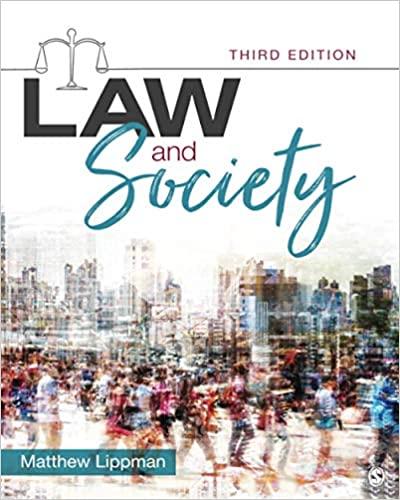Question
Case Study: Conflicting Clients Topic: Auditing (Confidentiality, Misrepresentation of Facts) People Involved: Jennifer Grace, First-year member of her CPA firm's management group Tom Ward, CFO
Case Study:Conflicting Clients
Topic:Auditing (Confidentiality, Misrepresentation of Facts)
People Involved:
- Jennifer Grace, First-year member of her CPA firm's management group
- Tom Ward, CFO of Fantastic Developments, Inc., a client
While reviewing the current-year audit working papers of Coshocton National Bank (CNB), the engagement manager, Jennifer Grace, noted something curious. In the working papers related to loan valuation, Jennifer saw that the commercial loan of Fantastic Developments had been randomly selected for confirmation but that Fantastic had not responded to either the initial or second confirmation request. The audit staff disposed of this "loose end" by alternate procedures: examining cash collections (which had become somewhat sporadic) and vouching to underlying loan documentation, including a set of recent (unaudited) financial statements that showed Fantastic's solid financial position and operating profitability.
Jennifer noted this reference to Fantastic Developments because this private company was also a client of her firm. In fact, Jennifer had served as the audit senior on Jennifer noted this reference to Fantastic Developments because this private company was also a client of her firm. In fact, Jennifer had served as the audit senior on the prior-year audit of Fantastic. She knew that the company had been struggling for a couple of years and had experienced recurring operating losses. Her knowledge of Fantastic did not reconcile with the discussion in the audit working papers related to the financial statements furnished to the bank.
When Jennifer contacted Fantastic's CFO, Tom Ward, and inquired about the company's apparently miraculous turnaround, he was noncommittal and unhelpful. Tom replied that business had picked up. He apologized for not calling Jennifer's firm himself because he had been so busy, and then he told her that Fantastic had decided to engage another CPA firm for its accounting and auditing needs. Although confused, Jennifer obviously couldn't reject the possibility that this abrupt dismissal was a direct consequence of her inquiry.
As a result, Jennifer wonders whether the financial statements which Fantastic furnished to the bank as a basis for a loan application are fraudulent. The bank apparently has no such suspicion, however.
Instructions for Case Analyses Case Analyses allow students to apply concepts from the course to business situations. Theories, vocabulary, and examples from the readings should be used. Clear and concise writing shows an ability to directly relate learned material to the Cases. Headings and subheadings should be used to delineate which issue and category is being addressed. Use these guidelines along with the stated assessment criteria to craft your case analyses. Relevant Facts - (A) Overview of pertinent points. (B) Describe the background of the situation or business that is relevant to the ethical problem(s) or dilemma(s) of the Case. (C) Highlight information that sets the context for analysis. Ethical Issues - (A) State the ethical problem(s) or dilemma(s) (B) Demonstrate comprehension of ethical concepts. (C) Describe the ethical aspects of the Case. Identifying Stakeholders - There is always a set of "usual suspects" in a Case, so be sure to list everyone who might be connected. Remember that business decisions have far-reaching effects, so consider anyone who might be affected by the ethical considerations of the Case. Possible Alternatives - (A) Identify solutions that can be described for each ethical issue identified. (B) List all solutions and approaches to identified ethical issues. (C) Alternatives may be drawn from the Case, Readings, or personal experience including outside readings Ethics of the Alternatives - (A) Critically assess the alternatives identified for a possible recommendation. (B) Describe the ethical implications of each alternative. (C) Consider external and internal aspects of ethical proposals. (D) Apply the "utilitarian" perspective (costs and benefits). 1. Which of the alternatives would provide the greatest benefit to the greatest number? 2. What are the costs in each of the alternatives? 3. Which of the alternatives has the highest "cost" factor associated with it? 4. Do the benefits of honesty at all costs outweigh the benefits of obeying the directive? of a supervisor? (E) Apply the "rights" perspective. 1. What does the stakeholder have the right to expect? 2. Which of the alternatives would you want if you were each of the stakeholders? (F) Apply the "justice" perspective (benefits and burdens). 1. Which alternative distributes the benefits and burdens most fairly among the stakeholders? 2. Which stakeholders are most affected by each alternative? Practical Constraints - (A) Possible obstacles to the implementation of the identified alternatives. (B) Ethical problems that may come up in executing each alternative. (C) What unwanted outcomes may result from each alternative? (D) What aspects of the market might obstruct each alternative? Specific Action - (A) Make a recommendation (B) Analysis should provide context for whatever is recommended.
Step by Step Solution
There are 3 Steps involved in it
Step: 1

Get Instant Access to Expert-Tailored Solutions
See step-by-step solutions with expert insights and AI powered tools for academic success
Step: 2

Step: 3

Ace Your Homework with AI
Get the answers you need in no time with our AI-driven, step-by-step assistance
Get Started


